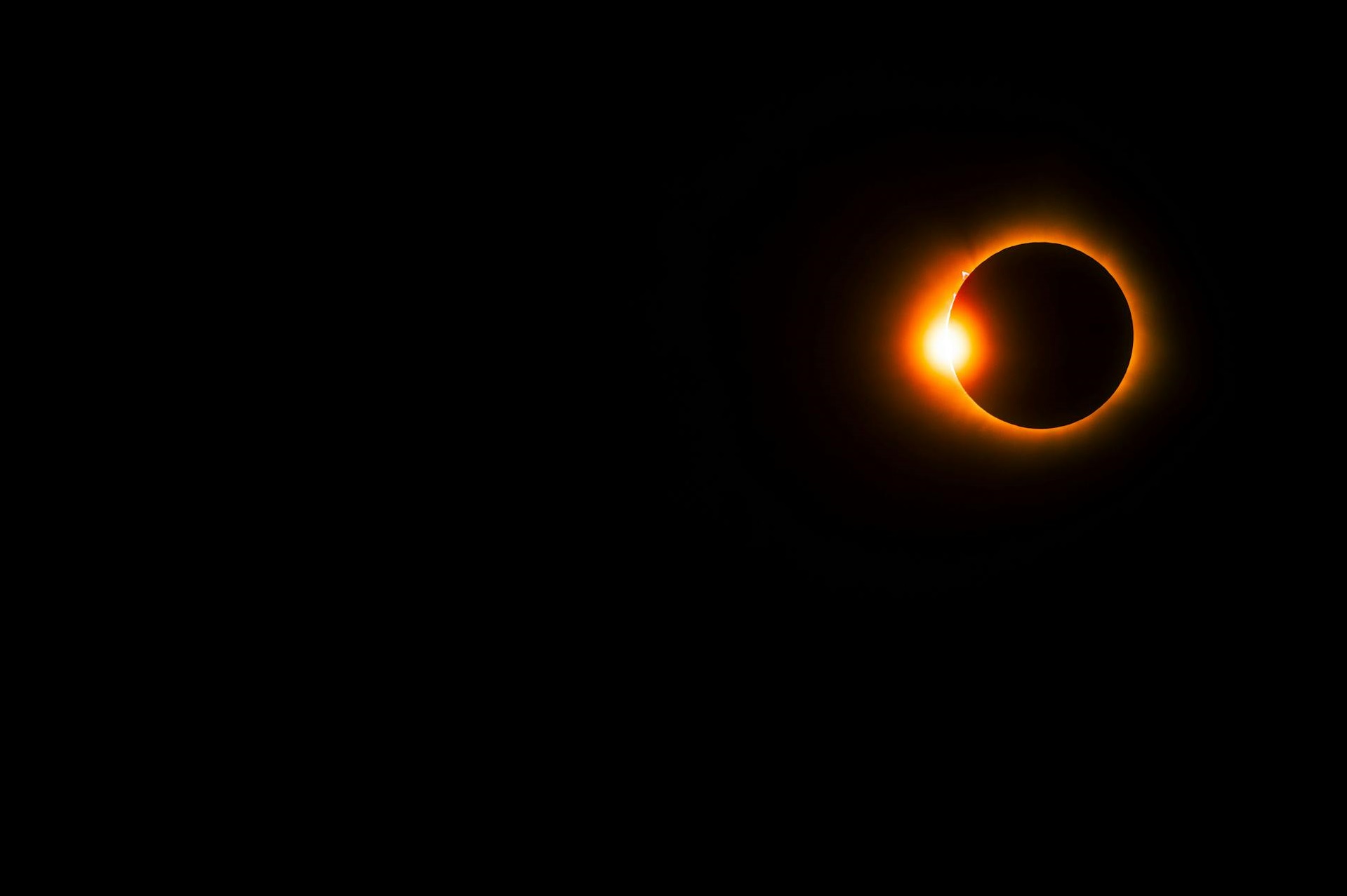
Solar Eclipses
What is a Solar Eclipse?
A solar eclipse occurs when the Moon passes between the Earth and the Sun, temporarily blocking the Sun’s light either partially or completely. This alignment only happens during a new moon phase when the Sun, Moon, and Earth are aligned. Solar eclipses can be a spectacular sight, as they cause the Sun to appear as though it’s being obscured by the Moon.
Types of Solar Eclipses
Total Solal Eclipse
A total solar eclipse occurs when the Moon completely covers the Sun, casting a shadow on the Earth and turning day into night for a brief period. This phenomenon can only happen during a new moon when the Sun, Moon, and Earth align perfectly. During a total solar eclipse, the Moon completely obscures the bright surface of the Sun, allowing the Sun’s outer atmosphere, called the corona, to become visible as a glowing halo.
A total solar eclipse is a rare and awe-inspiring event, as the sky darkens, the temperature drops, and stars and planets may even become visible in the daytime. The total phase of the eclipse, when the Sun is entirely covered by the Moon, typically lasts only a few minutes, but the event itself can last for a couple of hours from start to finish.
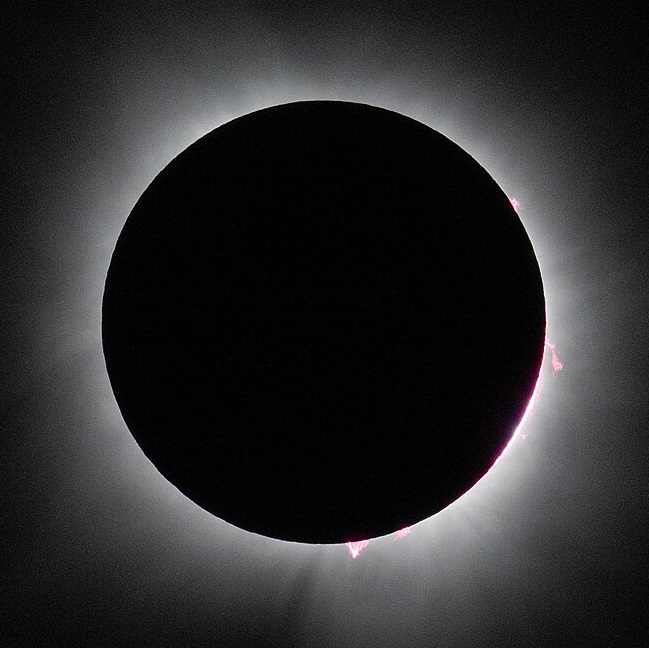
Partial Solar Eclipse
A partial solar eclipse occurs when the Moon passes between the Earth and the Sun, but only partially covers the Sun’s surface. During this type of eclipse, the alignment is not perfect, so the Moon only blocks a portion of the Sun’s light. As a result, the Sun appears as a crescent shape or with a “bite” taken out of it, depending on how much of the Sun is obscured.
Partial solar eclipses can be seen over a large geographic area, but the exact appearance of the eclipse varies depending on your location. The amount of the Sun covered by the Moon is greater the closer you are to the path of the eclipse’s central shadow.
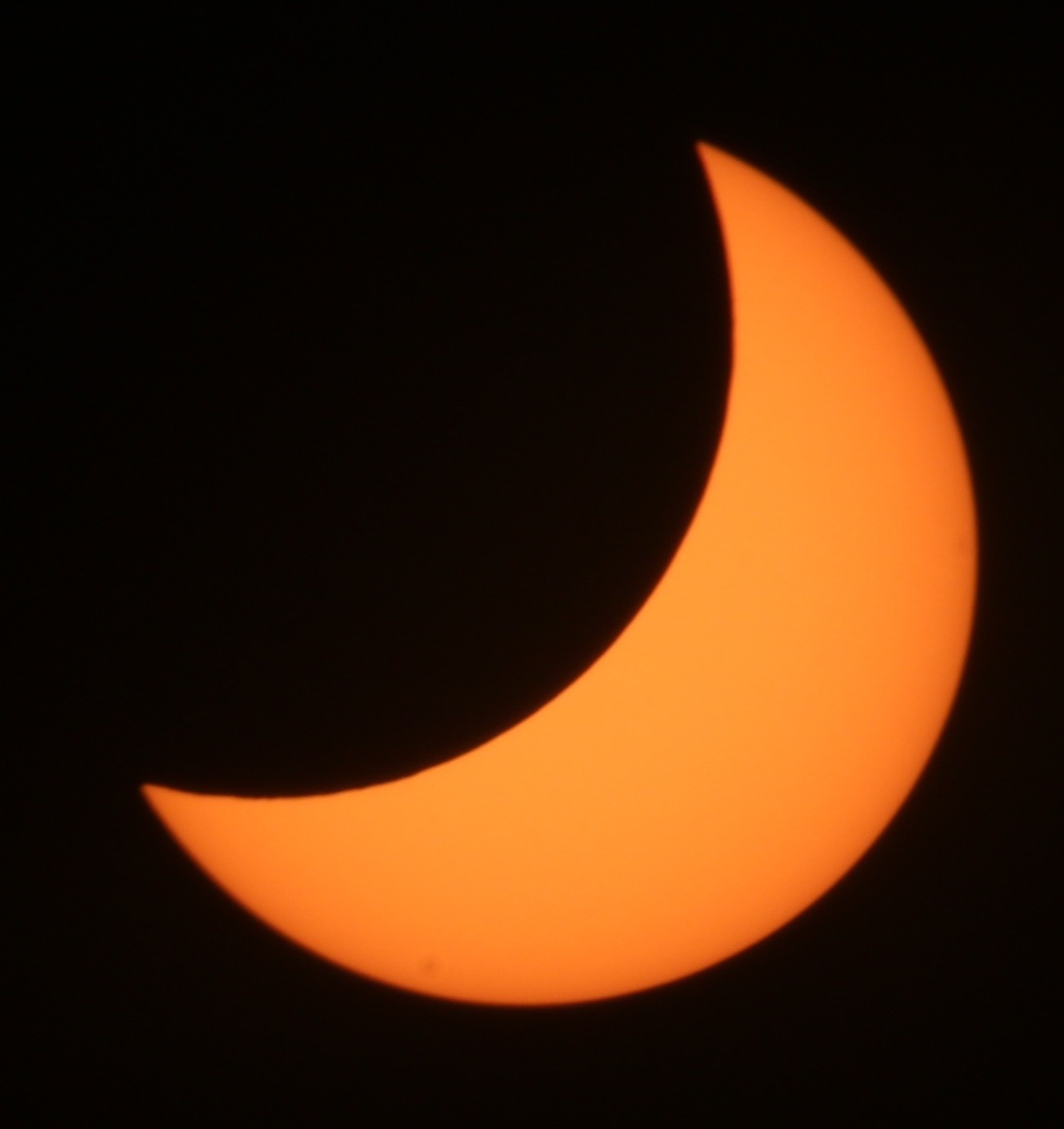
Annular Solal Eclipse
An annular solar eclipse occurs when the Moon passes directly between the Earth and the Sun, but the Moon is too far away from the Earth to completely cover the Sun. As a result, instead of the Sun being fully obscured, a bright ring of the Sun’s surface, known as the photosphere, remains visible around the dark disk of the Moon. This ring is often referred to as the “ring of fire.”
During an annular eclipse, the Moon appears smaller in the sky than the Sun because of its greater distance from the Earth. The effect creates a stunning visual of the Sun’s outer edges, surrounded by the dark shadow of the Moon. Annular solar eclipses can be seen from a narrow path on the Earth’s surface, and the exact area where the “ring of fire” is visible depends on the alignment of the Sun, Moon, and Earth.
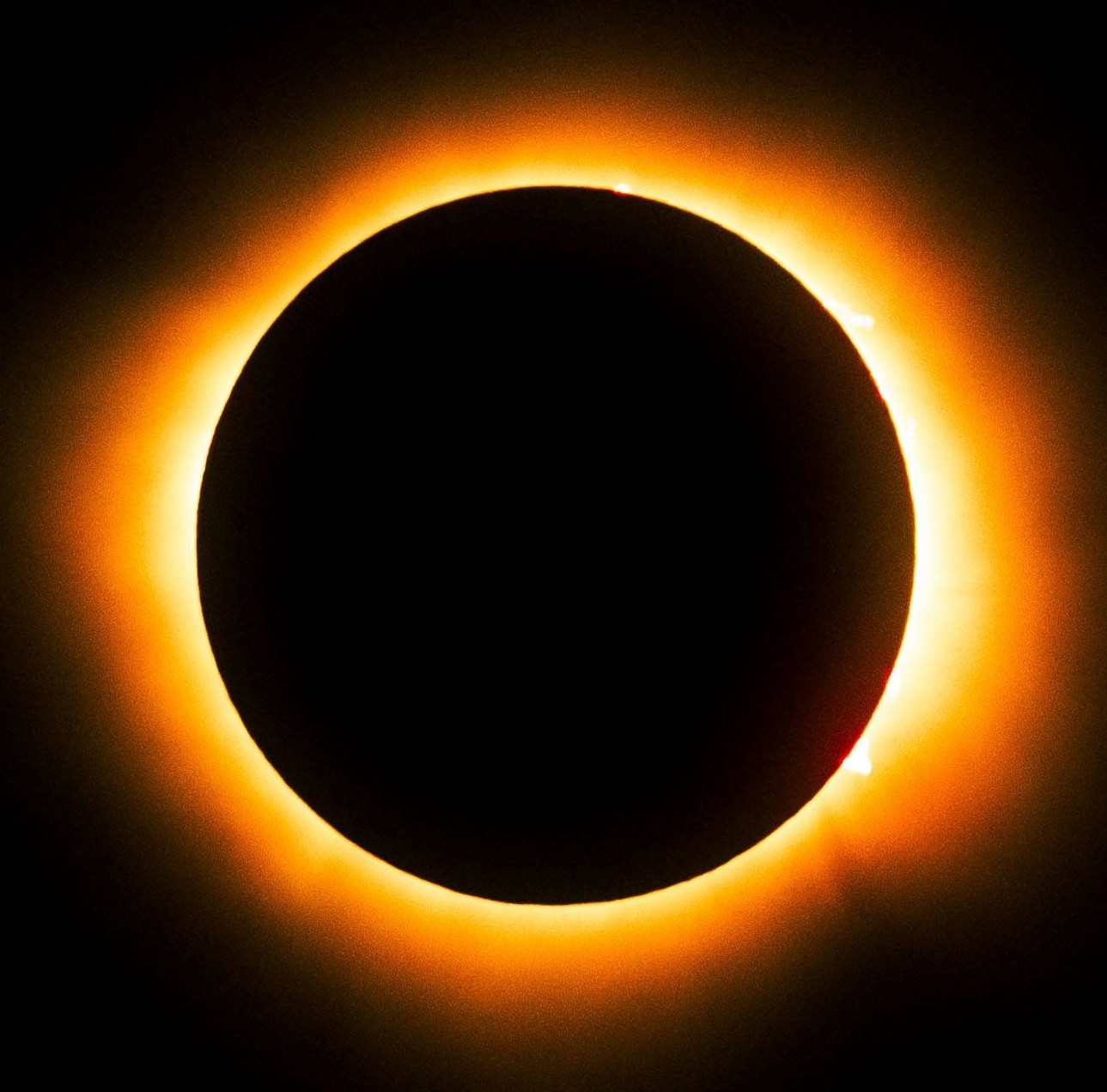
Hybrid Solal Eclipse
A hybrid solar eclipse is a rare type of solar eclipse that combines elements of both a total solar eclipse and an annular solar eclipse. During a hybrid eclipse, the Moon completely covers the Sun in some areas of the Earth, creating a total solar eclipse, while in other areas, the Moon appears slightly smaller than the Sun, resulting in an annular eclipse, where a bright ring of the Sun’s surface (photosphere) remains visible around the dark disk of the Moon.
This variation occurs because the Earth’s curvature and the distance between the Earth and the Moon change along the eclipse’s path. As a result, observers at different locations will experience different types of eclipses — some will see a total solar eclipse, while others will see an annular one.
Hybrid solar eclipses are extremely rare, occurring only a few times each century. Because of their unique nature, they offer a fascinating and varied experience for those lucky enough to witness them.
Safety Note: It’s essential to never look directly at the Sun without proper eye protection, such as eclipse glasses, as it can cause permanent eye damage.
Solar Eclipses – Next 10 Years
| Year | Date | Eclipse Type | Region of Visibility | |
 | 2025 | Mar 29 | Partial | Europe, Asia, Africa, North America, South America, Atlantic, Arctic |
 | 2025 | Sep 21 | Partial | Australia, Pacific, Atlantic, Antarctica |
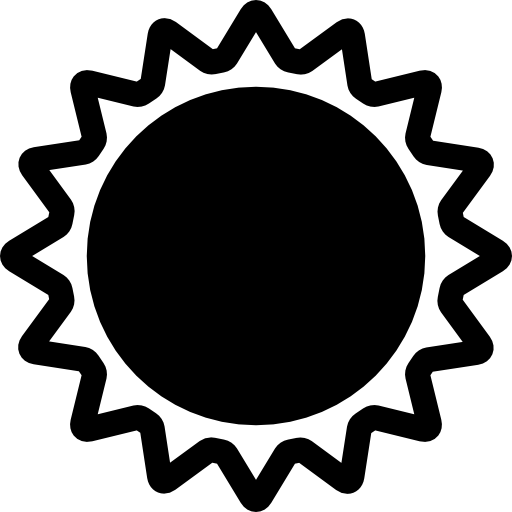 | 2026 | Feb 17 | Annular | Africa, South America, Pacific, Atlantic, Indian Ocean, Antarctica |
 | 2026 | Aug 12 | Total | Europe, Asia, Africa, North America, Pacific, Atlantic, Arctic |
 | 2027 | Feb 6 | Annular | Africa, South America, Pacific, Atlantic, Antarctica |
 | 2027 | Aug 2 | Total | Europe, Asia, Africa, North America, Atlantic, Indian Ocean |
 | 2028 | Jan 26 | Annular | Europe, Africa, North America, South America, Pacific, Atlantic |
 | 2028 | Jul 22 | Total | Asia, Australia, Pacific, Indian Ocean, Antarctica |
 | 2029 | Jan 14 | Partial | North America, Pacific, Atlantic |
 | 2029 | Jun 12 | Partial | Europe, Asia, North America, Pacific, Arctic |
 | 2029 | Jul 11 | Partial | South America, Pacific, Atlantic |
 | 2029 | Dec 5 | Partial | South America, Pacific, Atlantic, Indian Ocean, Antarctica |
 | 2030 | Jun 1 | Annular | Europe, Asia, Africa, North America, Pacific, Atlantic, Arctic |
 | 2030 | Nov 25 | Total | Asia, Australia, Africa, Pacific, Atlantic, Indian Ocean, Antarctica |
 | 2031 | May 21 | Annular | Asia, Australia, Africa, Pacific, Atlantic, Indian Ocean |
 | 2031 | Nov 14 | Total | North America, South America, Pacific, Atlantic |
 | 2032 | May 9 | Annular | Africa, South America, Atlantic, Indian Ocean, Antarctica |
 | 2032 | Nov 3 | Partial | Europe, Asia, Pacific |
 | 2033 | Mar 30 | Total | Europe, Asia, North America, Pacific, Atlantic, Arctic |
 | 2033 | Sep 23 | Partial | South America, Pacific, Atlantic, Indian Ocean, Antarctica |
 | 2034 | Mar 20 | Total | Europe, Asia, Africa, South America, Atlantic, Indian Ocean |
 | 2034 | Sep 12 | Annular | North America, South America, Pacific, Atlantic, Antarctica |
 | 2035 | Mar 9 | Annular | Australia, North America, Pacific, Indian Ocean, Antarctica |
 | 2035 | Sep 2 | Total | Europe, Asia, North America, Pacific, Arctic |
